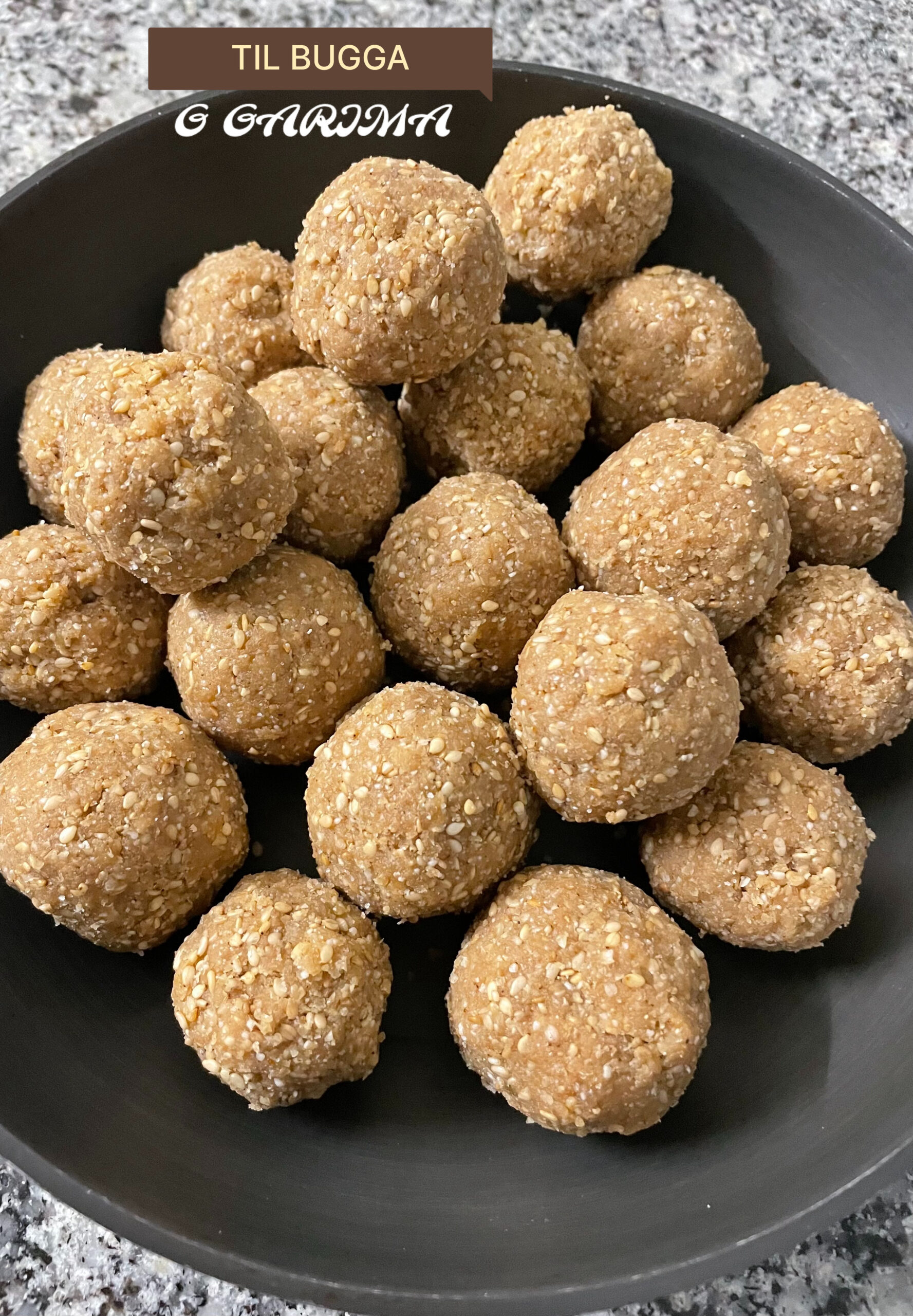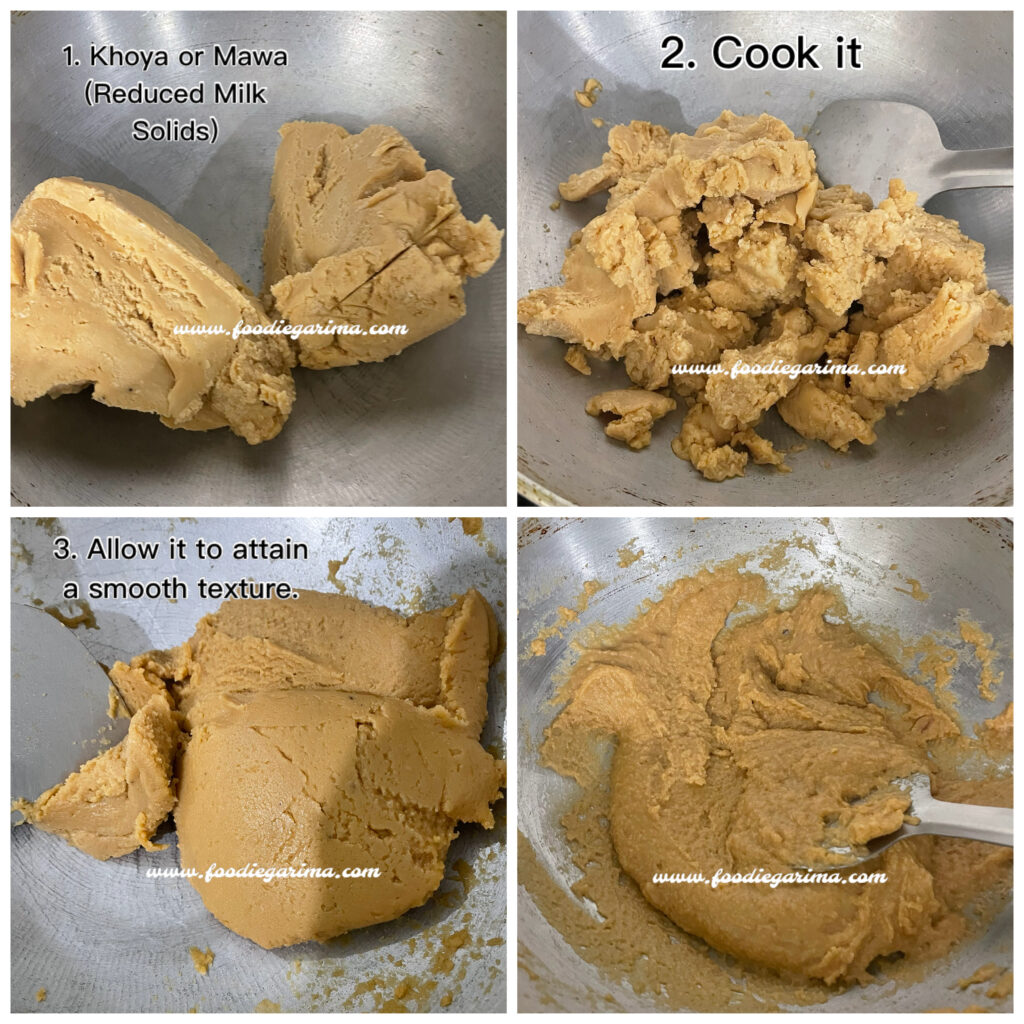19 January, 2024
Til Bugga Recipe (Using Khoya/Mawa) | Sesame Sweet

Til Bugga, at its core, is a confluence of simple yet flavorful ingredients. While Sesame Seeds (Til) form the backbone of this Sweet, the addition of Khoya/Mawa (Reduced Milk Solids) and Bura or Powdered Sugar brings richness and sweetness, creating a harmonious blend that delights the taste buds.
Preparing Til Bugga involves roasting Sesame Seeds, melting Khoya, and carefully incorporating Bura or Powdered Sugar to achieve the perfect blend of flavors and textures.
Sesame Seeds (Til)
Sesame Seeds, often toasted to enhance their nutty flavor, contribute a distinctive crunch to Til Bugga. These tiny seeds are not only a flavor enhancer but also packed with essential nutrients, making Til Bugga a wholesome indulgence.
Khoya or Mawa (Reduced Milk Solids)
Khoya or Mawa, the result of simmering Milk until it thickens and solidifies, lends a creamy texture to Til Bugga. Its mild sweetness complements the earthy tones of Sesame Seeds, creating a balanced and satisfying dessert.
Bura or Powdered Sugar
Bura or Powdered Sugar adds a unique sweetness to Til Bugga without overpowering its natural flavors. The use of Bura or Powdered Sugar ensures that the sweetness is nuanced, allowing the other ingredients to shine through.
Makar Sankranti Celebration: Where Tradition Meets Taste
Makar Sankranti, a festival celebrated with enthusiasm across India, brings with it a delightful array of traditional sweets including Chikkis, Ladoos, and special Rice dishes in different regions. Among these, Til Bugga stands out as a quintessential treat, enjoyed in various states with unique variations.
Regional Variations of Til Bugga
As Makar Sankranti is celebrated with unique nuances across India, Til Bugga undergoes delightful regional variations. In states like Gujarat and Maharashtra , Sesame Seeds (Til) is often combined with Jaggery to create a luscious sweet called “Tilgul”.
As families gather to celebrate, the aroma of Til Bugga wafting through homes adds a sweet note to the festive air.
Let’s get started with the recipe.
INGREDIENTS:
| 800 Grams Sesame Seeds |
| 1 kg Khoya or Mawa (Reduced Milk Solids) |
| 400 Grams Bura (Powdered Sugar) |
STEP-BY-STEP RECIPE GUIDE
1. Roasting the Sesame Seeds:

- Begin by dry-roasting the Sesame Seeds in a pan over low heat. (I am using Brown Sesame Seeds in this recipe. However, you have the flexibility to opt for either White Sesame Seeds or Brown Sesame Seeds based on your personal preference).
- Stir continuously to ensure even roasting.
- Roast it until the seeds turn golden brown and emit a nutty aroma. The roasting process typically requires around 40 minutes for the Seeds to attain the desired crunch and golden-brown hue.
- Allow the roasted Sesame Seeds to cool naturally at room temperature.
- Once they cool or reach room temperature, proceed to grind them in a mixer grinder.
- Grind them to a coarse powder. You can grind them to a fine powder also if you want a smoother texture. But I like keeping it a bit coarse.
2. Preparing the Khoya:

- In a separate pan, melt and cook the Khoya over low heat. (I am using readymade Khoya, but you can also prepare it at home).
- Stir continuously to prevent it from sticking to the bottom.
- Continue cooking until the Khoya cooks lightly or cook it for about 15 minutes.
- The Khoya should become smooth and creamy. This is crucial for achieving the desired texture of Til Bugga.
- Allow it to cool at room temperature after the cooking process is done.
3. Combining Everything:

- Add the Bura or Powdered Sugar to the coarsely ground Sesame Seeds.
- Mix thoroughly to ensure even distribution of Bura or Powdered Sugar within the ground Sesame Seeds.
- Gradually incorporate the Khoya to the Bura and ground Sesame Seeds mixture.
- Use a gentle folding motion to incorporate the Khoya, ensuring that the Khoya is evenly distributed.
- Taste the mixture and adjust the quantity of Bura based on your preference.
4. Shaping Til Bugga:
- While the mixture is still warm, take small portions and shape them into bite-sized rounds or your desired shape.
- You can also press the mixture into a greased tray and cut it into squares once it cools.
- For an added crunch and visual appeal, you can add the chopped Nuts of your choice.


Allow the shaped Til Bugga to cool completely before serving or storing. This ensures that they set properly and retain their shape.
Til Bugga is not just a sweet dish; it’s a reflection of the rich cultural tapestry woven during Makar Sankranti. As families come together to celebrate the harvest season, Til Bugga serves as a sweet reminder of the tradition, taste, and togetherness.
While it is a festive favorite during Makar Sankranti, Til Bugga can be enjoyed throughout the year.